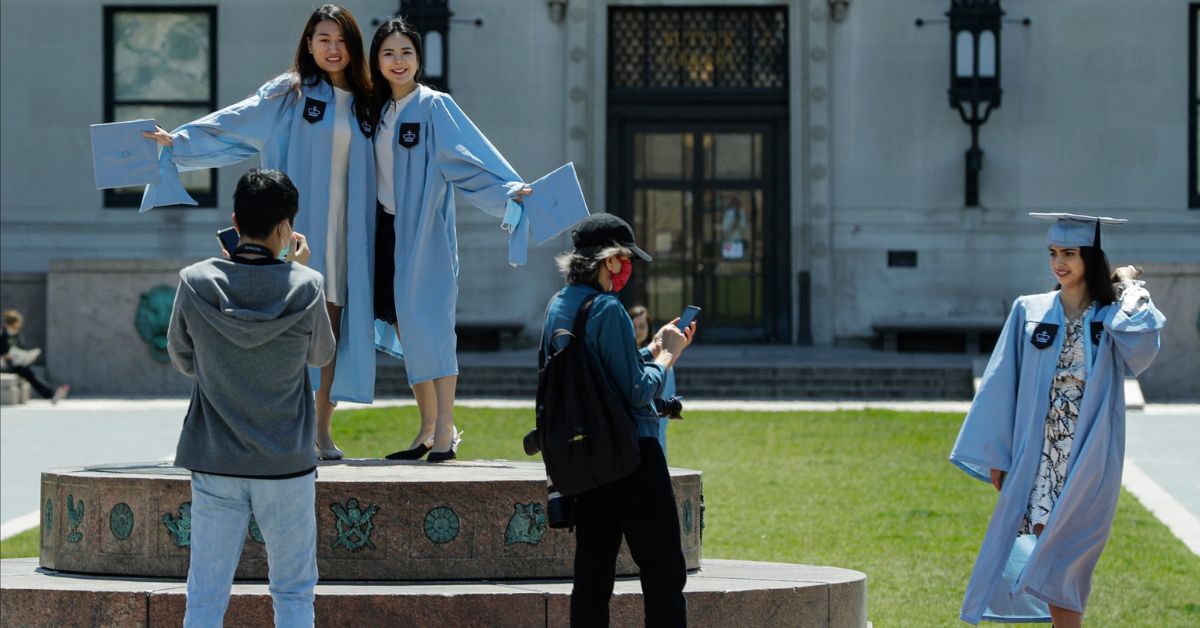It’s time to get back on track with your student loan payments. Millions of people who took out student loans no longer have to make regular payments as of March 2020. This pause will be over soon.
According to a statement released by the Department of Education, “Congress recently passed a law preventing further extensions of the payment pause.” That allowed interest to begin collecting on September 1 and payments to be due on October 1.
I’ve had enough of experience with people who are burdened by school debt. Some have had trouble making payments due to poor income, illness, or family responsibilities like caring for aging parents. In contrast, I’ve found that most people are just playing about.
They became accustomed to not having to make payments on their federally backed loans during the initial six-month grace period. This routine persisted even when they were given extra free time. They kept their debts on hold via deferment or forbearance for years after they could have started paying anything, even if it was just the interest.
Or they did not make an effort to find a suitable payment arrangement. If you are in this group of borrowers, the suspension of your federal loans due to the epidemic will be lifted this fall.
Start now planning to restart your education loan payments. If you choose to avoid the consequences of failing to address your student loans, things can get ugly.https://t.co/EQNYPTzhSn
— Michelle Singletary (@SingletaryM) June 14, 2023
Don’t wait to Make your First Payment in October
Get some experience making payments right away. To verify your monthly payment, contact your loan servicer. You should start putting that money away in July. Learn how much the loan payment will add to your regular expenses by using this helpful tool.
Contact your loan servicer to discuss payment options if the financial strain becomes intolerable during the preseason.
Don’t Ask for more Delays if you don’t Need Them
If a borrower meets the conditions for a deferment or forbearance, they are excused from making payments on their loan. Due to the prevalence of media depictions, we tend to think that six-figure debt loads are the norm for most people.
According to the most recent research from the Federal Reserve on the Economic Well-Being of U.S. Households in 2022, however, the average student loan borrower owes significantly less than $25,000.
According to the Fed, the average amount of student loan debt for individuals who had any in 2022 was $20,000 to $24,999. The Fed noted that while it is typical to focus on those with outstanding debt, many borrowers had already paid off their student loan balances in full.
The difficulty of debt repayment may be overestimated if past debtors are not included.
Both up-to-date news and an in-depth look into the Golden State can be found below.
- Second Stimulus Check Payments by Debit Card Are Coming
- Indigo Credit Card: Building Credit for Those with Limited Histories
However, you should at least figure out if you can afford to pay the interest that is due if you end up needing to take the deferment or forbearance route come October (due to, for example, a job loss or extended illness).
4 things you need to focus on as student loan payments resume https://t.co/1fZS9jEXxA
— Beltline B*tch (@BeeBreezy10) June 14, 2023
Don’t Ignore Interest Capitalization
Since becoming graduates, many borrowers have struggled financially. Some people didn’t finish college and hence still have to pay back their student loans. Private for-profit institutions have tricked some students into taking on substantial debt for useless degrees.
The Biden administration’s plan to cancel up to $20,000 in student loans would primarily help these populations. However, I know of many others who have kept their loans in delay or forbearance for years on end, despite the fact that their hardship was temporary.
I checked their finances and found that they had the means to make payments. But they were spending a lot of money they didn’t have on things like eating out, remodeling their homes, going on expensive vacations, and buying unnecessary items.
Or they invested in a pricey master’s degree because they thought it would increase their earning potential. It didn’t help much, if at all. Because of the exorbitant cost of their monthly loan payments, they requested a temporary delay.

Their loans have increased over the years, and they are understandably alarmed. Capitalization of interest, in two words. If your loan’s interest is higher than your monthly payments, the difference will be capitalized. After that, interest is added to the increased total owed.
Because interest was adjusted based on the increased principal balance, your loans will continue to accrue interest over time. Because of this, your monthly payment can go up and become completely unmanageable.
Don’t Ignore Your Responsibility
You could be looking at years or even decades of debt, even if the Supreme Court approves of the Biden plan to cancel student loans. Avoiding the responsibility is not the solution to your problem.
I’ve lost count of the number of folks who, when asked how much they owe in student loans, respond with a guess. I helped a borrower who was mistaken about how much she owed. We worked out a plan whereby she could eliminate all of the debt in roughly six months by decreasing costs.
Some people worry that they won’t be able to afford the payments without first learning about the many options available through the Education Department’s loan repayment program.
You could be eligible for a repayment program that takes into account your income and family size. If your salary is too low, you may not be able to afford the minimum payment.
The plans can be compared using the loan simulator on studentaid.gov. You’ll be asked a series of questions designed to help you zero in on the optimal solution. For instance, if you want the simulator to help you find a plan with a low monthly premium, you can tell it such.
You risk having your wages garnished if you ignore your loans and let the situation deteriorate. If your debt is here to stay, do something about it. Do not disregard it.
You can check out the following links for additional information regarding student loans:
- Customer Service Hours Reduced by Student Loan Servicers Ahead of Payment Restart
- 93% of student loan borrowers aren’t ready to begin paying again. Inflation could make it also worse
Huge Updates To Student Loan Servicing
When it comes time to start paying back student loans, borrowers will find a quite different picture. Loan servicers are private companies that work on behalf of the Department of Education to manage student loan accounts.
Over the past three years, there has been a dramatic shift in the student loan servicing industry, with some servicers hired by the Education Department abandoning the Federal Student Aid system and being replaced by new entrants.
A new analysis by the Consumer Financial Protection Bureau (CFPB) found that more than 40% of borrowers will be working with a different loan servicer than they were before the student loan moratorium went into place.
FedLoan Servicing’s departure resulted in accounts being transferred to EdFinancial, MOHELA, and other loan servicers; Navient’s transfer of its Education Department accounts to Aidvantage; and these are only some of the more notable changes.
Nelnet has also been receiving the department portfolio from Great Lakes Higher Education. The functions played by student loan servicers are essential. Borrowers can contact them with questions and concerns as well as for help with making payments or setting up a repayment plan.
Advocates have expressed concern that the Education Department’s student loan service may fail under the weight of millions of borrowers restarting repayment at once, due to the aforementioned changes to loan servicing and financial constraints.
Biden’s New Student Loan Repayment Plan
The Biden administration is revising an existing income-driven repayment scheme in order to create a new plan for repaying student loans. The most current suggestion suggests that under certain conditions, borrowers’ monthly payments might be cut by as much as 50%, and loan forgiveness could be expedited.
However, the plan is not yet complete. Even when payments are resumed later this summer, not all of it will be accessible. Newly proposed regulations from the Department of Education are forthcoming, and implementation of some parts of the plan may begin as early as this year or as late as 2024.
After the grace period for student loans ends, this could provide borrowers with a new option for lowering their monthly payment. Borrowers may become confused as existing income-driven plans are phased out as the new plan is implemented.
New information and in-depth analysis of California are both available here:
- Atlanta Guys Arrested for Fraud After Obtaining $600k in PPP Loans
- How to Immediately Get a $500 Loan from Direct Lenders?
Account Adjustment May Lead To Student Loan Forgiveness This Summer
Another large debt relief program is moving forward even as the Supreme Court considers President Biden’s signature student loan forgiveness proposal (which can erase up to $20,000 in federal student loan debt).
With the IDR Account Adjustment, the Education Department can apply a borrower’s previous loan periods toward the borrower’s income-driven repayment plan’s 20- or 25-year forgiveness term.
Government-held federal student loan borrowers are eligible for these benefits regardless of whether or not their loans are enrolled in an IDR program.
If a borrower receives enough IDR credit to meet the forgiveness level, their student loans will be discharged. The government anticipates releasing some debt in August, when repayment by borrowers is scheduled to commence.
This means that not all debtors who thought they would have to make payments will actually have to. Other debtors whose accounts are updated next year will be those who earn retroactive IDR credit but do not meet the requirements for student loan forgiveness.
In order for these borrowers to keep making progress, they may need to switch to or keep up with an IDR plan.
New Student Loan Forgiveness Regulations
The Biden administration has approved new rules for forgiving student loans, and they will go into effect on July 1. Almost every major federal program that cancels student loans will be affected by these rules.
More borrowers will be able to qualify for PSLF credit and loan forgiveness as a result of the new regulations that will formalize some of the recent, temporary flexibilities for Public Service Loan Forgiveness.
Other student loan forgiveness programs will have more availability and relief thanks to new laws that streamline the application procedure. Two of these are the Borrower Defense to Repayment program and the Total and Permanent Disability (TPD) release program.
These regulatory reforms, in contrast to Biden’s new student loan repayment scheme, are essentially finalized and should be in force by the time borrowers return to repayment.
The California Examiner is your best bet if you want to keep up with what’s happening in the Golden State and its surrounding areas.




